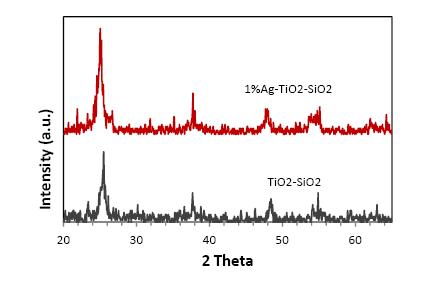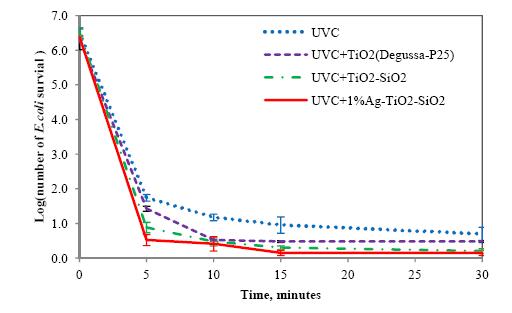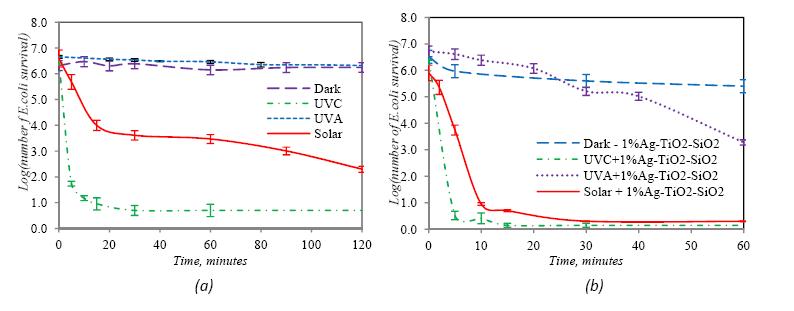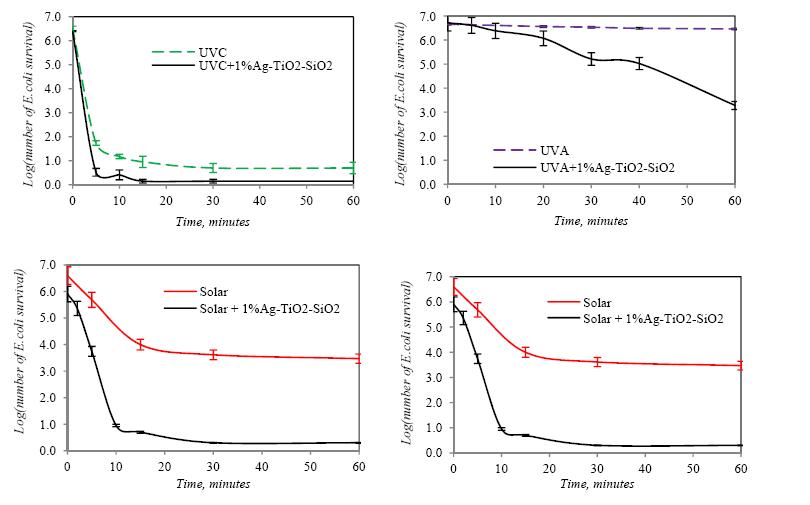1.
Introduction and preliminaries
We consider, for $ x \in {\mathbb R}^{n}, \ t > 0 $, the following system
where $ n \geq 3, \alpha > 0 $, the functions $ h_i(., ., .)\in (\mathbb{R}^3, \mathbb{R}), i = 1, 2, 3 $ are given by
with $ d, e > 0, q > 3 $. The function $ \frac{1}{\theta (x)}\sim \vartheta(x) > 0 $ for all $ x \in {\mathbb R}^{n} $ is a density such that
As in [15], it is not hard to see that there exists a function $ \mathcal{G}\in C^1(\mathbb{R}^3, \mathbb{R}) $ such that
satisfies
We define the function spaces $ {\mathcal H} $ as the closure of $ C_{0}^{\infty}({\mathbb R}^{n}) $, as in [18], we have
with respect to the norm $ \left\Vert v \right\Vert_{{\mathcal H}} = \left(v, v \right)_{{\mathcal H}}^{1/2} $ for the inner product
and $ L_{\vartheta}^{2}({\mathbb R}^{n}) $ as that to the norm $ \left\Vert v \right\Vert_{L_{\vartheta}^{2}} = \left(v, v \right)_{L_{\vartheta}^{2}}^{1/2} $ for
For general $ r \in [1, +\infty) $
is the norm of the weighted space $ L_{\vartheta}^{r}({\mathbb R}^{n}) $.
The main aim of this work is to consider an important problem from the point of view of application in sciences and engineering (materials which is something between that of elastic solids and Newtonian fluids), namely, a system of three wave equations having a damping effects in an unbounded domain with strong external forces including damping terms of memory type with past history. Using the Faedo-Galerkin [16] method and some energy estimates, we proved the existence of global solution in $ \mathbb{R}^n $ owing to the weighted function. By imposing a new appropriate condition, with the help of some special estimates and generalized Poincaré's inequality, we obtained an unusual decay rate for the energy function. For more detail regarding the single equation, we review the following references [7,8]. The paper [7] is one of the pioneer in literature for the single equation, which is the source of inspiration of several researches, while the work [8] is a recent generalization of [7] by introducing less dissipative effects.
To enrich our topic, it is necessary to review previous works regarding the nonlinear coupled system of wave equations, from a qualitative and quantitative study. Let us begin with the single wave equation treated in [13], where the aim goal was mainely on the system
where $ \Omega $ is a bounded domain of $ \mathbb{R}^n, \ n\geq 1 $ with a smooth boundary $ \partial\Omega $. The author firstly constructed a local existence of weak solution by using contraction mapping principle and of course showed the global existence, decay rate and infinite time blow up of the solution with condition on initial energy.
Next, a nonexistence of global solutions for system of three semi-linear hyperbolic equations was introduced in [3]. A coupled system for semi-linear hyperbolic equations was investigated by many authors and a different results were obtained with the nonlinearities in the form $ f_1 = |u|^{q-1}|v|^{q+1}u, f_2 = |v|^{q-1}|u|^{q+1}v $. (Please, see [2,5,9,14,24,29]).
In the case of non-bounded domain $ \mathbb{R}^n $, we mention the paper recently published by T. Miyasita and Kh. Zennir in [16], where the considered equation as follows
with initial data
The authors showed the existence of unique local solution and they continued to extend it to be global in time. The rate of the decay for solution was the main result by considering the relaxation function is strictly convex, for more results related to decay rate of solution of this type of problems, please see [6,17,25,26,30,31].
Regarding the study of the coupled system of two nonlinear wave equations, it is worth recalling some of the work recently published. Baowei Feng et al. considered in [10], a coupled system for viscoelastic wave equations with nonlinear sources in bounded domain ($ (x, t)\in \Omega \times (0, \infty) $) with smooth boundary as follows
Here, the authors concerned with a system in $ \mathbb{R}^n (n = 1, 2, 3) $. Under appropriate hypotheses, they established a general decay result by multiplication techniques to extends some existing results for a single equation to the case of a coupled system.
It is worth noting here that there are several studies in this field and we particularly refer to the generalization that Shun et al. made in studying a complicate non-linear case with degenerate damping term in [22]. The IBVP for a system of nonlinear viscoelastic wave equations in a bounded domain was considered in the problem
where $ \Omega $ is a bounded domain with a smooth boundary. Given certain conditions on the kernel functions, degenerate damping and nonlinear source terms, they got a decay rate of the energy function for some initial data.
The lack of existence (Blow up) is considered one of the most important qualitative studies that must be spoken of, given its importance in terms of application in various applied sciences. Concerning the nonexistence of solution for a more degenerate case for coupled system of wave equations with different damping, we mention the papers [19,20,21,23,27].
In $ m $-equations, paper in [1] considered a system
where the absence of global solutions with positive initial energy was investigated.
We introduce a very useful Sobolev embedding and generalized Poincaré inequalities.
Lemma 1.1. [16] Let $ \vartheta $ satisfy (1.2). For positive constants $ C_{\tau} > 0 $ and $ C_{P} > 0 $ depending only on $ \vartheta $ and $ n $, we have
and
for $ v \in {\mathcal H} $.
Lemma 1.2. [12] Let $ \vartheta $ satisfy (1.2), then the estimates
and
hold for $ v \in {\mathcal H} $. Here $ \tau = 2n/(2n-rn+2r) $ for $ 1 \leq r \leq 2n / (n-2) $.
We assume that the kernel functions $ \varpi_1, \varpi_2, \varpi_3 \in C^1(\mathbb{R}^{+}, \mathbb{R}^{+}) $ satisfy
we mean by $ \mathbb{R}^{+} $ the set $ \{ \tau \mid \tau \geq 0 \} $. Noting by
and
We assume that there is a function $ \chi \in C^1(\mathbb{R}^{+}, \mathbb{R}^{+}) $ such that
for any $ \xi \geq 0 $.
Hölder and Young's inequalities give
and
and
Thanks to Minkowski's inequality to give
Then there exist $ \eta > 0 $ such that
We need to define positive constants $ \lambda_{0} $ and $ \mathcal{E}_{0} $ by
The mainely aim of the present paper is to obtain a novel decay rate of solution from the convexity property of the function $ \chi $ given in Theorem 3.1.
We denote as in [18,28] an eigenpair $ \left\{ (\lambda_{i}, e_{i}) \right\}_{i \in {\mathbb N}} \subset {\mathbb R} \times {\mathcal H} $ of
for any $ i \in {\mathbb N} $, $ (\theta(x))^{-1}\equiv \vartheta(x) $. Then
holds and $ \left\{ e_{i} \right\} $ is a complete orthonormal system in $ {\mathcal H} $.
Definition 1.3. The triplet functions $ (u, v, w) $ is said a weak solution to (1.1) on $ [0, T] $ if satisfies for $ x \in {\mathbb R}^{n} $,
for all test functions $ \varphi, \psi, \Psi \in {\mathcal H} $ for almost all $ t \in [0, T] $.
2.
Local and global existence
The next Theorem is concerned on the local solution (in time $ [0, T] $).
Theorem 2.1. (Local existence) Assume that
Let $ (u_{0}, v_0, w_0) \in {\mathcal H}^3 $ and $ (u_{1}, v_1, w_3) \in L_{\vartheta}^{2}({\mathbb R}^{n})\times L_{\vartheta}^{2}({\mathbb R}^{n})\times L_{\vartheta}^{2}({\mathbb R}^{n}) $. Under the assumptions (1.2)–(1.17) and (1.11)–(1.14). Then (1.1) admits a unique local solution $ (u, v, w) $ such that
for sufficiently small $ T > 0 $.
We prove the existence of global solution in time. Let us introduce the potential energy $ J:\mathcal H^3 \to \mathbb{R} $ defined by
where
for any $ w \in L^2({\mathbb R}^{n}), j = 1, 2, 3 $. The modified energy is defined by
Theorem 2.2. (Global existence) Let (1.2)–(1.17) and (1.11)–(1.14) hold. Under (2.1) and for sufficiently small $ (u_{0}, u_{1}), (v_{0}, v_{1}), (w_{0}, w_{1}) \in {\mathcal H} \times L_{\vartheta}^{2}({\mathbb R}^{n}) $, problem (1.1) admits a unique global solution $ (u, v, w) $ such that
The next, Lemma will play an important role in the sequel.
Lemma 2.3. For $ (u, v, w)\in {\mathcal X}^3_{T} $, the functional $ \mathcal{E}(t) $ associated with problem (1.1) is a decreasing energy.
Proof. For $ 0 \leq t_{1} < t_{2} \leq T $, we have
owing to (1.11)–(1.14).
We sketch here the outline of the proof for local solution by a standard procedure(See [4,11,31]).
Proof. (Of Theorem 2.1.) Let $ (u_{0}, u_{1}), (v_{0}, v_{1}), (w_{0}, w_{1}) \in {\mathcal H} \times L_{\vartheta}^{2}({\mathbb R}^{n}) $. For any $ (u, v, w) \in {\mathcal X}^3_{T} $, we can obtain weak solution of the related system
We reduces problem (2.5) to Cauchy problem for system of ODE by using the Faedo-Galerkin approximation. We then find a solution map $ \top : (u, v, w) \mapsto (z, y, \zeta) $ from $ {\mathcal X}^3_{T} $ to $ {\mathcal X}^3_{T} $. We are now ready show that $ \top $ is a contraction mapping in an appropriate subset of $ {\mathcal X}^3_{T} $ for a small $ T > 0 $. Hence $ \top $ has a fixed point $ \top (u, v, w) = (u, v, w) $, which gives a unique solution in $ {\mathcal X}^3_{T} $.
We will show the global solution. By using conditions on functions $ \varpi_1, \varpi_2, \varpi_3 $, we have
here $ \varsigma^2 = J(u, v, w) $, for $ t \in [0, T) $, where
Noting that $ \mathcal{E}_0 = G(\lambda_{0}) $, given in (1.19). Then
Moreover, $ \lim\limits_{\xi \to +\infty}G(\xi) \to -\infty $. Then, we have the following lemma
Lemma 2.4. Let $ 0 \leq \mathcal{E}(0) < \mathcal{E}_{0} $.
$ (i) $ If $ \left\Vert u_{0} \right\Vert^2_{\mathcal H}+\left\Vert v_{0} \right\Vert^2_{\mathcal H} +\left\Vert w_{0} \right\Vert^2_{\mathcal H} < \lambda^2_{0} $, then local solution of (1.1) satisfies
$ (ii) $ If $ \left\Vert u_{0} \right\Vert^2_{\mathcal H}+\left\Vert v_{0} \right\Vert^2_{\mathcal H}+\left\Vert w_{0} \right\Vert^2_{\mathcal H} > \lambda^2_{0} $, then local solution of (1.1) satisfies
Proof. Since $ 0 \leq \mathcal{E}(0) < \mathcal{E}_{0} = G(\lambda_{0}) $, there exist $ \xi_{1} $ and $ \xi_{2} $ such that $ G(\xi_{1}) = G(\xi_{2}) = \mathcal{E}(0) $ with $ 0 < \xi_{1} < \lambda_{0} < \xi_{2} $.
The case $ (i) $. By (2.6), we have
which implies that $ J(u_0, v_0, w_0) \leq \xi^2_{1}. $ Then we claim that $ J(u, v, w) \leq \xi^2_{1}, \ \forall t \in [0, T) $. Moreover, there exists $ t_{0} \in (0, T) $ such that
Then
by Lemma 2.3, which contradicts (2.6). Hence we have
The case $ (ii) $. We can now show that
and
in the same way as $ (i) $.
Proof. (Of Theorem 2.2.) Let $ (u_{0}, u_{1}), (v_{0}, v_{1}), (w_{0}, w_{1}) \in {\mathcal H} \times L_{\vartheta}^{2}({\mathbb R}^{n}) $ satisfy both $ 0 \leq \mathcal{E}(0) < \mathcal{E}_{0} $ and
By Lemma 2.3 and Lemma 2.4, we have
This completes the proof.
Let
Lemma 2.5. Let $ (u, v, w) $ be the solution of problem (1.1). If
Then under condition (3.1), the functional $ \Pi(u, v, w) > 0, \ \forall t > 0. $
Proof. By (2.11) and continuity, there exists a time $ t_1 > 0 $ such that
Let
Then, by (2.9), (2.10), we have for all $ (u, v, w)\in Y $,
Owing to (2.3), it follows for $ (u, v, w)\in Y $
By (1.18), (3.1) we have
hence $ \Pi(u(t_0), v(t_0), w(t_0)) > 0 $ on $ Y $, which contradicts the definition of $ Y $ since $ \Pi(u(t_0), v(t_0), w(t_0)) = 0 $. Thus $ \Pi(u, v, w) > 0, \ \forall t > 0. $
3.
Decay estimates
The decay rate for solution is given in the next Theorem
Theorem 3.1. (Decay of solution) Let (1.2)–(1.17) and (1.11)–(1.14) hold. Under condition (2.1) and
there exists $ t_{0} > 0 $ depending only on $ \varpi_1, \varpi_2, \varpi_3 $, $ \lambda_{1} $ and $ \chi'(0) $ such that
holds for all $ t \geq t_{0} $.
Proof. (Of Theorem 3.1.) By (1.18) and (2.13), we have for $ t \geq 0 $
Let
where $ \varpi $ and $ \varpi_0 $ defined in (1.12) and (1.13).
Noting that $ \lim \limits_{t \to +\infty}\varpi(t) = 0 $ by (1.11)–(1.13), we have
Then we take $ t_{0} > 0 $ such that
with (1.14) for all $ t > t_{0} $. Due to (2.3), we have
Then, by definition of $ I(t) $, we have
and Lemma 2.3, we have for all $ t_1, t_2\geq 0 $
then,
Finally, $ \forall t \geq t_0 $, we have
and we can choose $ t_0 > 0 $ large enough such that
then
by the convexity of $ \chi $ and (1.14), we have
Then
which completes the proof.
Acknowledgements
The author would like to thank the anonymous referees and the handling editor for their careful reading and for relevant remarks/suggestions to improve the paper.
Conflict of interest
The author agrees with the contents of the manuscript, and there is no conflict of interest among the author.

















 DownLoad:
DownLoad: